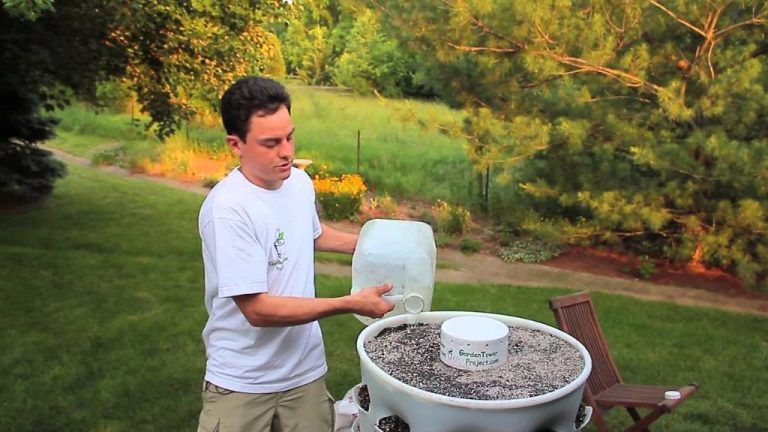Edible Garden Crop Rotation: Improving Soil Health And Preventing Disease
Introducing Crop Rotation
Crop rotation is the practice of growing different crops sequentially on the same land to maintain soil health and productivity. It has been used for thousands of years as an agricultural practice, dating back to cultures in Ancient Greece, Rome, and China.
The basic idea behind crop rotation is to not grow the same crop in the same place season after season. Rotating crops helps replenish nutrients in the soil that different plants use in varying amounts. It also helps disrupt disease cycles and prevents pest buildup. Overall, crop rotation improves soil structure and fertility, leading to increased crop productivity and yield.
There are many benefits to rotating crops on a planting schedule. Crop rotation helps prevent the depletion of nutrients from the soil that occurs when growing the same crops repeatedly. Rotating crops introduces diversity that helps break pest and disease cycles. It also controls weeds more effectively. In addition, rotating crops with different root structures improves soil aeration and stabilizes the soil to prevent erosion. With thoughtful planning, crop rotation can lead to increased yields, healthier plants, and richer soil.
Sources:
https://www.usda.gov/peoples-garden/soil-health/cover-crops-crop-rotation
Improving Soil Nutrients
Crop rotation helps replenish nutrients in the soil by cycling nutrient-demanding crops with nutrient-restoring crops. Certain crops, like corn, broccoli and tomatoes, tend to deplete nutrients like nitrogen, phosphorus and potassium from the soil. Other crops, like legumes, beans and peas, are nitrogen-fixing crops – meaning they draw nitrogen from the air and deposit it into the soil through their roots (Source). Planting nitrogen-fixing crops in rotation with nutrient-demanding crops gives the soil a chance to regenerate the nutrients that were previously depleted.
By thoughtfully alternating between nutrient depleting and nutrient-restoring crops each season, the soil has time to replenish its nutrients naturally. This balances the give and take of nutrients over time. Crop rotation also encourages the roots of plants to grow deeper into the soil profile to access nutrients, which creates more organic matter in the soil. The increased organic matter increases the soil’s ability to hold onto nutrients. All these factors contribute to healthier, more fertile soil when crops are properly rotated (Source).
Preventing Pest Problems

Crop rotation is an effective cultural control for preventing pest problems in an edible garden. When the same crops are continually grown in the same location, this allows insect pests, diseases, and weeds specialized for those crops to thrive year after year.
Rotating crops breaks these pest cycles by removing their preferred host plants. For example, the larvae of cabbage maggots only feed on plants in the cabbage family. If cabbage or broccoli is grown in the same spot annually, populations of cabbage maggots will explode. But rotating to a different unrelated plant the following year starves out the cabbage maggots.
According to the University of California’s publication, crop rotation is most effective against pests with a limited host range, long life cycle, and limited mobility. It disrupts their life cycle and prevents them from finding their preferred food source.
Additionally, rotating between crops with allelopathic properties helps suppress weeds and pests. Allelopathy refers to biochemicals produced by plants that can have an inhibitory effect on the germination, growth, or reproduction of other nearby plants. Using these allelopathic interactions to your advantage is another way crop rotation controls pests.
Managing Plant Diseases
One of the main benefits of crop rotation is disrupting disease pathogens in the soil. By rotating between plant families, pathogens are starved between growth cycles of their preferred hosts. According to Sustainable Agriculture Research and Education, crop rotation is effective at controlling soil-borne diseases caused by fungi, bacteria, nematodes and viruses. Key diseases that can be addressed through rotation include verticillium wilt, fusarium wilt, rhizoctonia root rot, and leaf spot diseases.
When the same crops are continuously planted in the same space, pathogens accumulate and infect plants year after year. Rotating to a non-host crop disrupts the lifecycle of the pathogen. For example, growing brassicas after solanaceous crops like tomatoes and potatoes can reduce verticillium wilt, according to the Organic Crop Production guide. The length of time needed between host crops depends on the pathogen – 2 to 3 years may be adequate for some fungi while 5 to 8 years are needed for other pathogens.
Planning a Rotation Schedule
There are several factors to consider when planning a crop rotation schedule:
According to the University of Delaware Extension program, the main factors are: crop needs, pest management, and soil improvement. Crop families have different nutrient needs – for example, avoiding planting heavy feeders like tomatoes and potatoes in the same place year after year. Rotating crops helps break pest and disease cycles. And rotating deep-rooted and shallow-rooted plants can help improve soil structure.
The Soil Association recommends planning rotations over a 4-5 year period if possible. This allows enough time for benefits to accumulate. Sample rotations might be: potatoes > legumes > brassicas > alliums or tomatoes > peas > lettuce > onions.
For small spaces, simpler 2-3 year rotations work well, such as: beans > lettuce > peas. The key is varying plant families and root depths.
Make sure to consider crop spacing as well – some follow crops will benefit from increased spacing after heavy feeders.
Rotating by Plant Family
Rotating crops by plant family is a key technique in crop rotation. There are certain plant families that deplete the soil of specific nutrients while others replenish those nutrients. By rotating plant families with opposite nutritional needs, the soil can be naturally replenished without the need for fertilizers.
Some of the key plant families to rotate include:
- Nightshade family – Tomatoes, potatoes, peppers and eggplants. These deplete the soil of nutrients like nitrogen and potassium.
- Cabbage family – Broccoli, cauliflower, kale and cabbage. These plants deplete sulfur and boron.
- Onion family – Onions, garlic, leeks and shallots. These deplete phosphorous.
- Carrot family – Carrots, parsley and celery. These deplete potassium.
- Legume family – Beans, peas and peanuts. These plants replenish nitrogen in the soil through nitrogen fixation.
- Cucurbit family – Cucumbers, melons, squash and pumpkins. These replenish phosphorous.
By rotating between plant families with opposite nutritional needs, the soil can replenish itself naturally over time. For example, planting beans after heavy feeders like tomatoes and broccoli helps restore lost nitrogen. This reduces the need for fertilizer and results in healthier plants and better yields (See Source).
Additionally, rotating by plant family helps break pest and disease cycles. Many pests and diseases prefer plants within the same family. By planting different families each season, the life cycles of these pests and diseases gets broken so they cannot thrive (See Source). This is a chemical free way to prevent crop damage and losses.
Companion Planting
Companion planting refers to planting different crops together in order to maximize space and provide natural benefits to the plants. Certain plants, when grown next to each other, can enhance flavor, deter pests, or attract beneficial insects. Companion planting takes advantage of these symbiotic relationships.
Some classic companion planting pairs include:
- Beans and potatoes – Beans provide nitrogen to the soil that potatoes need, while potatoes repel beetles that harm bean plants.
- Carrots and tomatoes – Carrots repel carrot flies that damage tomato plants, while tomato plants protect carrot roots.
- Marigolds and vegetables – Marigolds deter nematodes, aphids, and other garden pests.
When companion planting, focus on interplanting heavy feeders like tomatoes or broccoli with plants that help replenish soil nutrients like beans, peas, and lettuce. Also, be sure to rotate companion groups each year rather than planting the same combinations in the same areas multiple seasons in a row. This will help prevent depletion of specific soil nutrients.
For more examples of beneficial companion planting pairs, refer to this handy companion planting chart.
Crop Rotation for Small Spaces
Crop rotation can be adapted for small gardens and container gardening. With less space, you may not be able to dedicate separate beds to different plant families. However, you can still achieve rotation by succession planting. For example, after harvesting an early crop of lettuce or radishes, replant the space with a different crop like beans or tomatoes. This allows you to rotate plant families in one bed over the course of a season.
For container gardening, rotate pots and containers to different locations each season. Or, propagate new transplants in separate containers and swap them into the previous year’s pots and beds. This interrupts pest and disease cycles while replenishing nutrients.
When planning crop rotation in a small space, focus on rotating these plant families:
- Solanaceae (tomatoes, peppers, eggplants)
- Cucurbits (cucumbers, squash, melons)
- Brassicas (broccoli, cabbage, kale)
- Alliums (onions, garlic, leeks)
- Legumes (beans, peas)
- Leafy greens (lettuce, spinach)
Aim for at least a 2-3 year rotation cycle if possible. For example, an effective 3-year rotation could be tomatoes, followed by cucumbers, followed by lettuce. This prevents the successive buildup of diseases that affect those plant families.
With careful planning, crop rotation can significantly boost yields and plant health even in the smallest garden spaces. Adjust your approach to make use of every bit of available growing area over time.
Sources:
https://www.almanac.com/crop-rotation-chart-small-vegetable-garden
https://hortnews.extension.iastate.edu/crop-rotation-vegetable-garden
Sample Crop Rotation Schedule
A multi-year crop rotation plan is essential for maintaining soil health in a home garden. Here is a sample 4-year rotation schedule that can be followed:
Year 1:
- Beds 1-4: Tomatoes, peppers, eggplants, potatoes
- Beds 5-8: Beans, peas, cabbage, broccoli
- Beds 9-12: Carrots, beets, onions, lettuce
Year 2:
- Beds 1-4: Beans, peas, cabbage, broccoli
- Beds 5-8: Carrots, beets, onions, lettuce
- Beds 9-12: Tomatoes, peppers, eggplants, potatoes
Year 3:
- Beds 1-4: Carrots, beets, onions, lettuce
- Beds 5-8: Tomatoes, peppers, eggplants, potatoes
- Beds 9-12: Beans, peas, cabbage, broccoli
Year 4:
- Beds 1-4: Tomatoes, peppers, eggplants, potatoes
- Beds 5-8: Carrots, beets, onions, lettuce
- Beds 9-12: Beans, peas, cabbage, broccoli
This rotating schedule prevents the same crops from being planted in the same soil year after year. It gives time for the soil to recover its nutrients and prevents the buildup of crop-specific pests and diseases. For a small garden, a 4-year rotation plan provides enough diversity.
Benefits of Crop Rotation
Crop rotation provides many important benefits for soil health and plant growth. According to the USDA Natural Resources Conservation Service, rotating crops improves soil fertility, structure, and microbial activity (source). By growing different crops in succession, nutrients are replaced in the soil at different times and depths. This allows the soil to maintain balanced nutrition. Crop rotation also breaks weed, disease, and pest cycles by eliminating their food sources. Pathogens and pests cannot thrive when their target crops are rotated. Additionally, varying crops adds diversity to the soil microbiome, increasing beneficial organisms. Crop rotation improves the soil’s physical structure by alternating deep and shallow rooted plants. Deep rooted plants help break up compacted soil while shallow rooted plants develop topsoil structure. Overall, rotation improves soil health which leads to improved plant vigor and yield. It reduces the need for chemical fertilizers and pesticides. Crop rotation is a sustainable, natural way to build healthy soil and grow robust plants.






